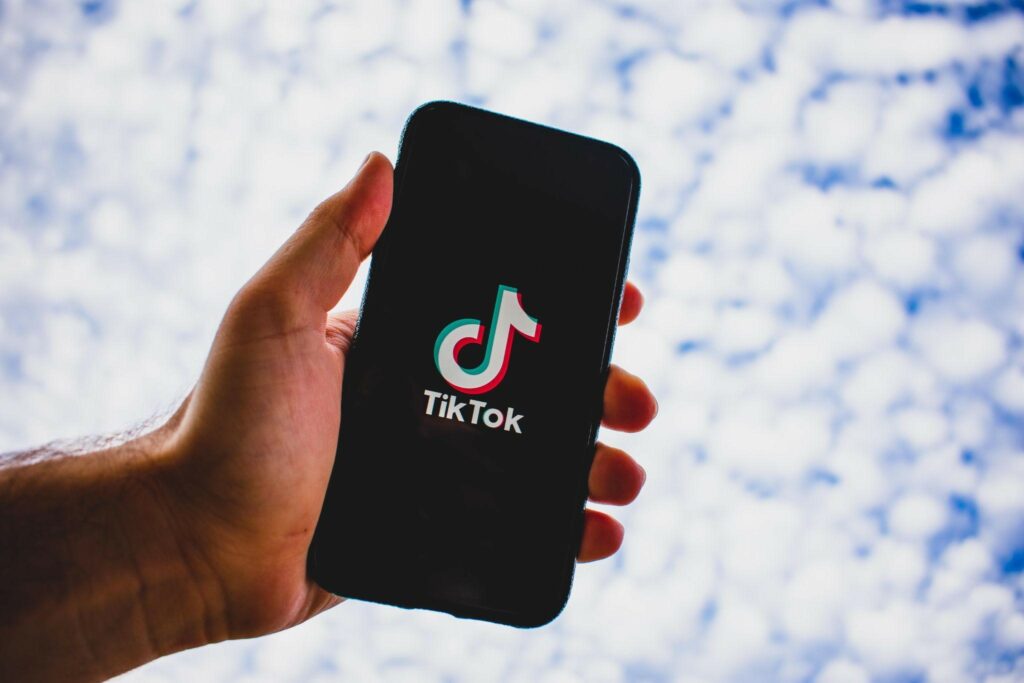Article Summary: You could be missing out on a golden marketing opportunity. We’re talking about social media video production – after all, 85% of social media users want more videos from brands they love, and video content is twice as likely to be shared with friends. Ensure success with these 5 steps to make your messaging stand out from the crowd.
The video has become a crucial part of social media strategy. Brands are using video to increase brand awareness, but many feel intimidated by the resource-intensive task of video production. To make the most of video on social media, there are a few key steps they should take. By following them, you can cut through the noise and get yourself heard.
As TikTok goes from strength to strength, and other social media platforms attempt to emulate its success, video is quickly becoming one of the most important parts of a brand’s social media strategy.
Requiring its own expertise and planning, video production adds more layers of complexity to the already time-intensive task of social media management, but the results – in terms of engagement, brand awareness, and conversions – can be well worth the effort.
From viral sea shanties and ASMR make-up tutorials to the near-endless library of cat videos, the sheer breadth and variety of social media video content can be hard to grasp. Alongside the incredible creativity of individuals, this diversity of content is, in part, due to the plethora of platforms ready to host social media videos, whether that’s LinkedIn Live or Instagram Reels.
For some brands, an innovative use of video has been completely transformative to their fortunes, and most established brands use video on social media to one extent or another. According to Sprout Social, 93% of social media marketers who use video say it’s a vital component of their strategies, but as a content type, video is still underutilised.
This could well be because many brands feel they simply don’t have the time or capacity to produce video, (which is perceived as being particularly resource-intensive) but there are a variety of reasons why this may be an oversight.
As with most things in life, video production feels a lot less daunting when there is a comprehensive plan in place, and taking a strategic approach to video can help to ensure the investment of time and money pays off.

Why Video is Important on Social Media
Most of us have at least one social media account, and on the majority of platforms, video is a key part of the experience. As it became clear that video keeps users engaged even more effectively than image or text-based content (with users spending 88% more time browsing on websites that have videos than those that do not), many platforms pivoted to create more opportunities for people to easily post video content. This shift has made video a prominent part of everyday social media use, and brands have been taking advantage of the power of video to capture the interest of potential customers.
As mentioned above, however, it can feel like there’s a high barrier to entry in social media video production, so stakeholders often need to be convinced they will see tangible results. Luckily, there is plenty of industry research that indicates the efficacy of a video-driven social media strategy.
- One-third of all online activity is spent watching videos.
- Half of social media users prefer video over other types of content.
- 85% of social media users would like more videos from brands.
- Video content is twice as likely to be shared with friends than other content types.
- When business videos are less than a minute long, 58% of viewers will watch them to the end.
- 87% of video marketers are satisfied with the ROI of their video marketing efforts on social media.
- Video marketers get two-thirds more qualified leads than those using other content formats.
The marketing industry also has plenty of case studies to point to with the brands who got their social media video strategy right.
One particularly compelling example of video-driven brand success is the story of Andertons, a musical instrument shop in Guilford.
Taking a forward-thinking approach as early adopters of video content, Andertons used YouTube and other social media channels to share mainly guitar-based content and connect with influencers, becoming a go-to informational channel for music lovers. This allowed the once-local shop to build its audience and reconstruct itself as a global brand, with over 800,000 YouTube subscribers.
So what are the first steps in making video work for your brand? We’ve put together five vital steps below.
Step One: Research What’s on Offer
As mentioned above, there is a huge amount of variety in video platforms on social media, and often there are several options available on one channel alone. For example, Instagram includes Instagram Live, Instagram Reels, and Instagram Stories, all of which support or are specifically designed for video.
Every social media channel also has its own nuances, audiences, and functionality. For example, TikTok was built for punchy short-form videos (although they have increased the length of videos that can be uploaded) and has a mainly Gen Z user base.
YouTube, on the other hand, can support videos that are hours long, has various subject niches and communities, and (being owned by Google) is a search engine in its own right – with videos on this platform far more likely to appear in general search results.
With the sheer amount of options on offer (and tips and tricks for making the most of specific platforms), you need to gain a thorough understanding of the social media landscape to identify opportunities and gain the most engaged audience.
For example, a flower shop could have great success on Instagram and TikTok with tutorials and videos that showcase the beauty of their products, but these platforms may not garner the same success for a marketing company, whose natural home might be LinkedIn.

Step Two: Understand Your Most Successful Historic Content
If you’ve been using email marketing, blog posts and text/image-based social media content to promote your brand, you can get an indication of what video content is likely to appeal to your audience by assessing what themes have worked well in the past. It can also be useful to check out what your competitors are up to – both for inspiration and for ideas on how you can differentiate your content so that your brand stands out.
Another important piece of planning is to understand the trends of various social media platforms and see if there’s anything you can tap into. Using particular “sounds”, for example, on Instagram and TikTok can hugely increase your chances of your content being seen outside of your existing audience, while trending content types are often boosted in the YouTube algorithm. Adapting your video content to suit the algorithm, trends and quirks of each platform is a very important part of this process.
Step Three: Plan a Tailored Social Media Video Calendar
Any digital content strategy benefits from being coherent, targeted, and omni-channel, which is where creating a tailored social media content calendar comes in.
You should make sure that your video content is tailored to:
- Your target audience
Are you hoping to enter new markets or convert people in your existing audience? Who is your ideal customer?
- Your goals
These might include KPIs like brand awareness or lead generation.
- The platform
Will the format perform well on this channel? What does the user base look like?
One of the tenants of marketing is that you are building a narrative, and taking your potential customers on a journey. That’s why it’s important to sketch out the key destinations on this journey and strategize how to get the most value from your content – whether that’s drawing people to important videos through email marketing or repurposing your scripts for blog content.
To make the planning process easier, build your content calendar around ‘content pillars’ that are applied strategically through the year. So, to use the above example of a floristry business, you may have ‘educational’ as a content pillar for top-of-funnel customers, based around tips and tutorials, and ‘showcase’ for bottom-of-funnel customers, in which the business’s most impressive work is beautifully filmed and shared.

Step Four: Get your Creative Juices Flowing
Once you have all that knowledge and strategy under your belt, it’s time for the fun bit – the ideas stage!
Whether it’s mind-mapping, anything-goes ideation meetings, or planning what you’d do if time and money were no object, you can use this period as a jumping-off point for creativity. Taking the framework of your strategy as a guide, you can begin to colour in your calendar with detail.
Once you have a bunch of great ideas, you can explore the practicalities of what it will be possible to achieve, according to your budget, equipment and availability. It usually makes sense to start simply and build from there, so the process may involve having to “kill your darlings”, but don’t worry – as time goes on, your experience will grow and your processes become more refined.
With forethought and ambition, you will be able to fulfill the majority of your ambitions.
It’s also important to note in your planning that it is common across many social media platforms for people to watch videos with the sound off.
While this is less usual on dedicated video platforms such as YouTube, TikTok and Vimeo, feed-based platforms like Facebook, Twitter and Instagram often default to silent, giving their users the choice to turn the sound on. With 92% of consumers watching videos with the sound off and 50% relying on captions, it’s vital that you plan for and create videos that are optimised for silent viewing.
Step Five: Get Filming!
From here, you can start setting up timetables and filming schedules that will help you transform your concepts from an idea into reality. Depending on the kind of video being produced, you may need to write scripts, hold events, or simply whip out your smartphone and talk to the camera – this is something that varies greatly on a case-by-case basis.
There is a lot that can be achieved with the most basic and accessible video equipment, and with a little time, anyone can learn how to create and promote engaging video content. Just think, if a 14-year-old with a smartphone and cool dance routine can go viral, there’s no reason why a whole team passionate about their brand can’t do the same thing.
That being said, for many brands, it makes sense to seek the services of a professional production company, both to achieve the desired results but also to free up internal company resources. Videos made using smartphone cameras and in-app editing functionality can be great and perfect for certain brands, but it isn’t necessarily right for everyone – especially if they want to utilise platforms like YouTube, where standards for production value are generally higher.
Conclusion
Video should be a key part of your brand’s social media strategy. After all, the format increases engagement, brand awareness and conversions. At first glance, video production might seem like a resource-intensive undertaking, but by undertaking a strategic approach, you can ensure that your investment of time and money pays off in a big way.
With video content twice as likely to be shared with friends, there is no denying that video-driven social media strategies work.
Are you ready to try it out?

About the author:

Phil Caplin is the founder of Broadcast Revolution – a specialist broadcast PR agency providing a fresh and creative way to deliver quality coverage for brands. Services include talent sourcing, media relations, video and podcast production, media training, and much more.
